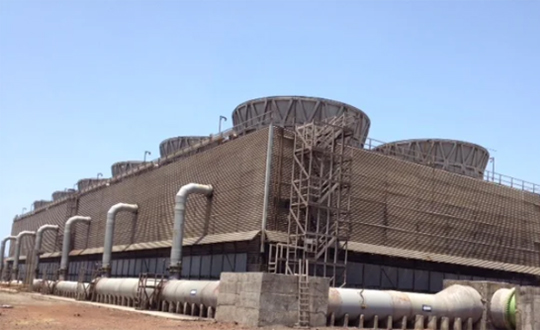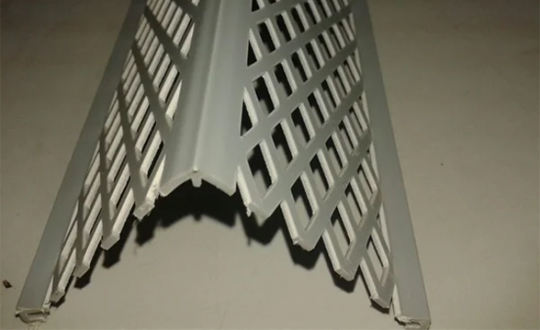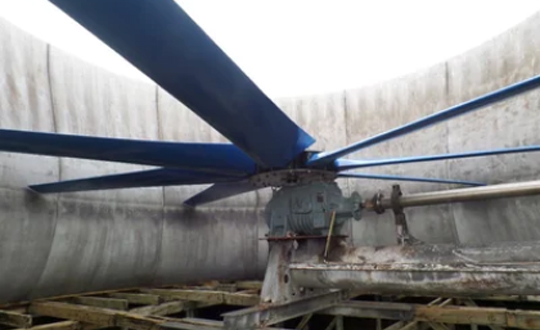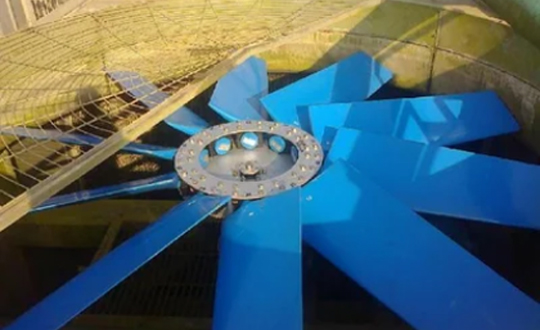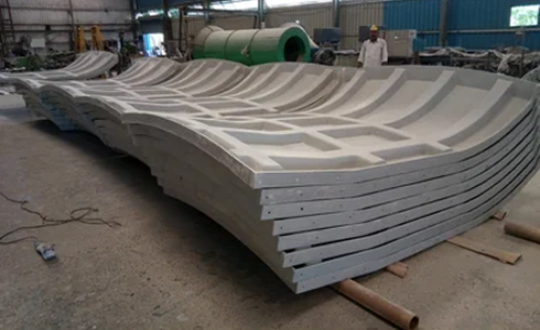Overview
This engineering note has been prepared to educate the Cooling Tower user, this deal with a very specific subject, which Aerotech Energy Pvt. Ltd. appeals our capabilities to do the CT Up-Gradation projects. Aerotech prepared the documents so that the user engineers can easily understand the Cooling Tower theory and possibilities to upgrade on existing Cooling Towers.
What is a Cooling Tower?
Cooled Water is needed for, for example, air conditioners, manufacturing processes or power generation. A Cooling Tower is an equipment used to reduce the temperature of a water stream by extracting heat from water and emitting it into the atmosphere. Cooling Towers make use of evaporation whereby some of the water is evaporated into a moving air stream and subsequently discharged into the atmosphere. As a result, the remainder of the water is cooled down significantly. Cooling Towers are able to lower the water temperatures more than devices that use only air to reject heat, like the radiator in a car, and are therefore more cost-effective and energy efficient.
Components of a Cooling Tower
The basic components of a Cooling Tower include the frame and casing, fill, cold-water basin, drift eliminators, air inlet, louvers, nozzles and fans. These are described below.
Frame and casing - Most Towers has structural frames that support the exterior enclosures (casings), motors, fans, and other components. With some smaller designs, such as some glass fiber units, the casing may essentially be the frame.
Fill. Most Towers employ fills (made of plastic or wood) to facilitate heat transfer by maximizing water and air contact.
There are two types of fill:
Splash Fill : Waterfalls over successive layers of horizontal splash bars, continuously breaking into smaller droplets, while also wetting the fill surface. Plastic splash fills promote better heat transfer than wood splash fills.
Film Fill : Consists of thin, closely spaced plastic surfaces over which the water spreads, forming a thin film in contact with the air. These surfaces may be flat, corrugated, honeycombed, or other patterns. The film type of fill is the more efficient and provides same Heat Transfer in a smaller volume than the splash fill.
Cold-Water Basin - The Cold-Water Basin is located at or near the bottom of the tower, and it receives the cold water that flows down through the tower and fill. The Basin usually has a sump or low point of the Cold-Water discharge connection. In many tower designs, the Cold-Water Basin is beneath the entire fill. In some forced draft counter flow design, however, the water at the bottom of the fill is channeled to a perimeter trough that functions as the Cold-Water Basin. Propeller fans are mounted beneath the fill to blow the air up through the tower. With this design, The Tower is mounted on legs, providing easy access to the fans and their motors.
Drift Eliminators - These capture water droplets entrapped in the air stream that otherwise would be lost to the atmosphere.
Air Inlet - This is the point of entry for the air entering a tower. The inlet may take up an entire side of a tower (Cross-Flow Design) or be located lower on the side or the bottom of the tower (Counter-Flow Design).
Louvers - Generally Cross-Flow Towers have inlet louvers. The purpose of louvers is to equalize air flow into the fill and retain the water within the tower. Many counter flow tower designs do not require louvers.
Nozzles - These spray water to wet the fill. Uniform water distribution at the top of the fill is essential to achieve proper wetting of the entire fill surface. Nozzles can either be fixed and spray in a round or square patterns, or they can be part of a rotating assembly as found in some circular Cross-Section Towers.
Fans - Axial Flow (propeller type) Fans are used in the towers. Generally, propeller fans are used in induced draft towers, fans are found in forced draft towers. Depending upon their size, the type of propeller fans used is either fixed or variable pitch. A fan with non-automatic adjustable pitch blades can be used over a wide kW range because the fan can be adjusted to deliver the desired air flow at the lowest power consumption.
Frame and casing - Wooden Towers are still available, but many components are made of different materials, such as the casing around the wooden framework of glass fiber, The inlet air louvers of glass fiber, The fill of plastic and the cold-water basin of steel. Many Towers (casings and basins) are constructed of galvanized steel or, where a corrosive atmosphere is a problem, The Tower and/or the basis is made of stainless steel. Larger Towers sometimes are made of concrete. Glass Fiber is also widely used for Cooling Tower Casings and Basins, because they extend the life of the Cooling Tower and provide protection against harmful chemicals.
Fill - Plastics are widely used for fill, including PVC, polypropylene, and other polymers. When water conditions require the use of splash fill, Treated wood splash fill is still used in wooden towers, But plastic splash fill is also widely used. Because of greater heat transfer efficiency, Film Fill is chosen for applications where the circulating water is generally free of debris that could block the fill passageways.
Nozzles - Plastics are also widely used for Nozzles. Many Nozzles are made of PVC, ABS, polypropylene, and Glass-Filled Nylon.
Fans - Glass Fiber Blades and Hot-Dipped Galvanized Steel Hubs are commonly used. Propeller Fans are made to mold Glass Fiber reinforced.
Types of Cooling Towers
This section describes the two main types of Cooling Towers: the natural draft and mechanical draft Cooling Towers.
Mechanical draft towers are available in a large range of capacities. Towers can be either factory built or field erected for example, concrete towers are only field erected.
Many Towers are constructed so that they can be grouped together to achieve the desired capacity. Thus, many Cooling Towers are assemblies of two or more individuals Cooling Towers, or "cells." The number of cells they have, e.g., a eight-cell tower, often refers to such towers. Multiple-Cell Towers can be lineal, square, or round depending upon the shape of the individual cells and whether the air inlets are located on the sides or bottoms of the cells.
The Three Types Of Mechanical Draft Towers are summarized in Table 1.
- Forced Draft Cooling Tower: Air is blown through the tower by a fan located in the air inlet
- Induced Draft Cross Flow Cooling Tower water enters at the top and passes over fill, air enters on one side (Single-Flow Tower) or opposite sides (Double-Flow Tower) , an induced draft fan draws air across the fill towards the exit at top of tower
- Induced draft counter flow Cooling Tower, Hot Water enters at the top, air enters the bottom and exits at the top, uses force and induced draft fans.

